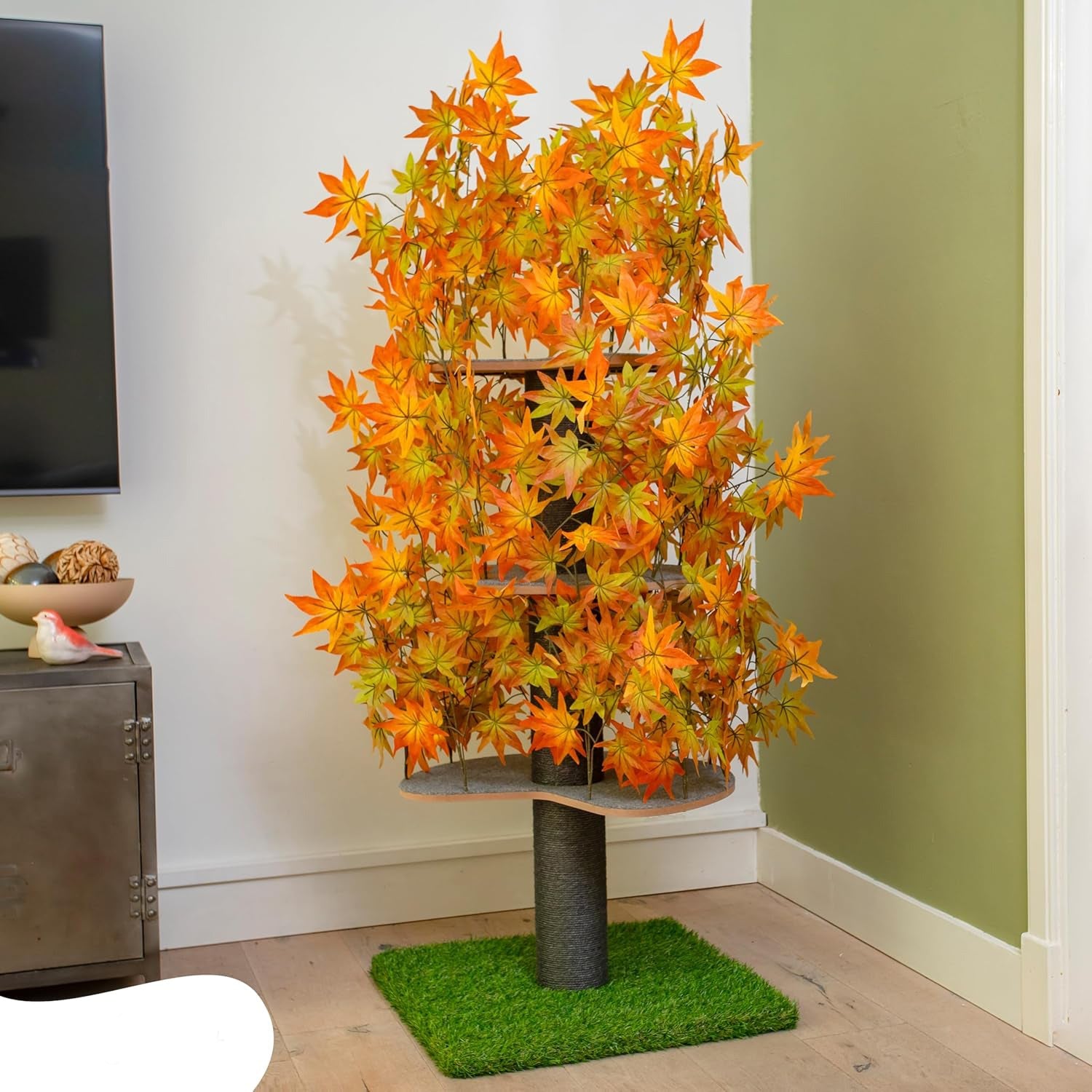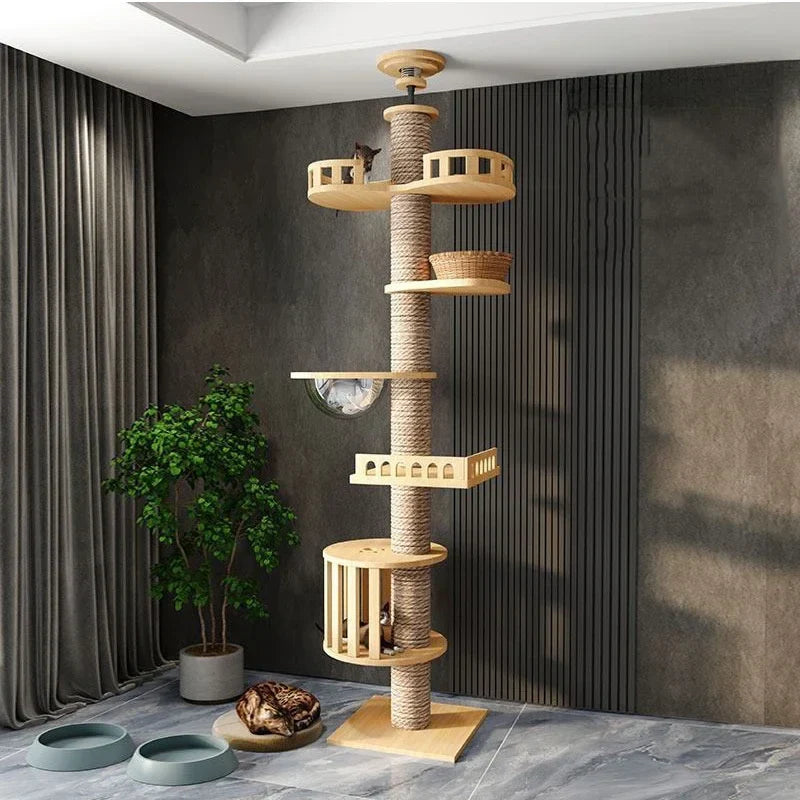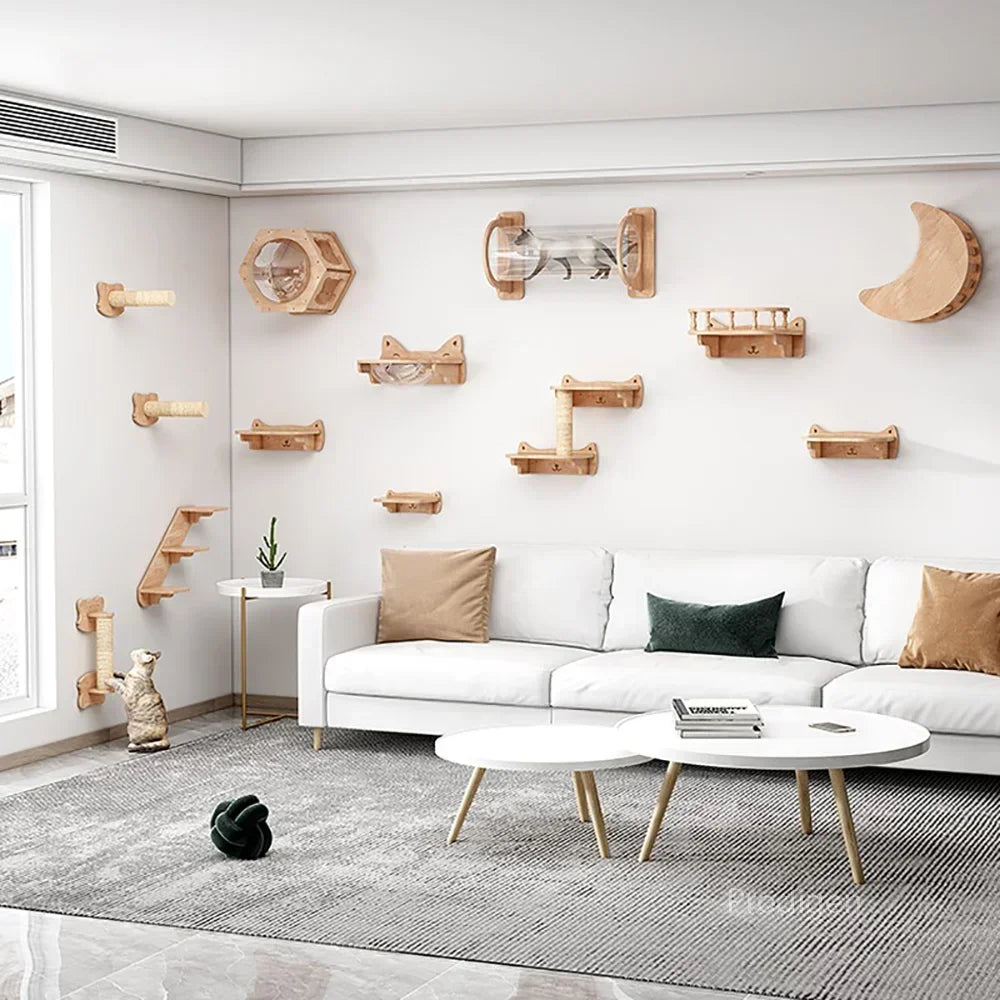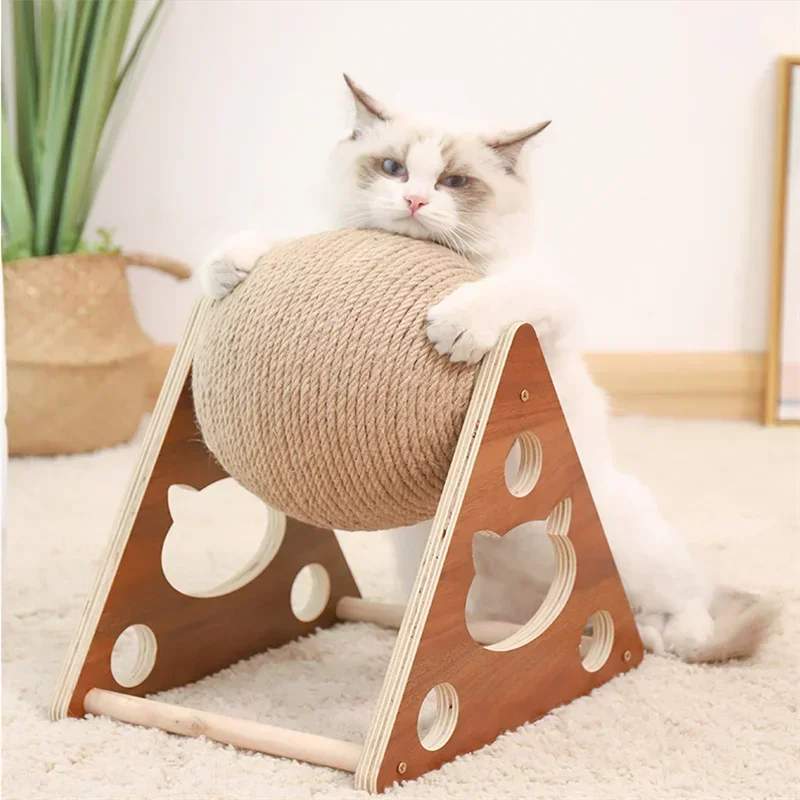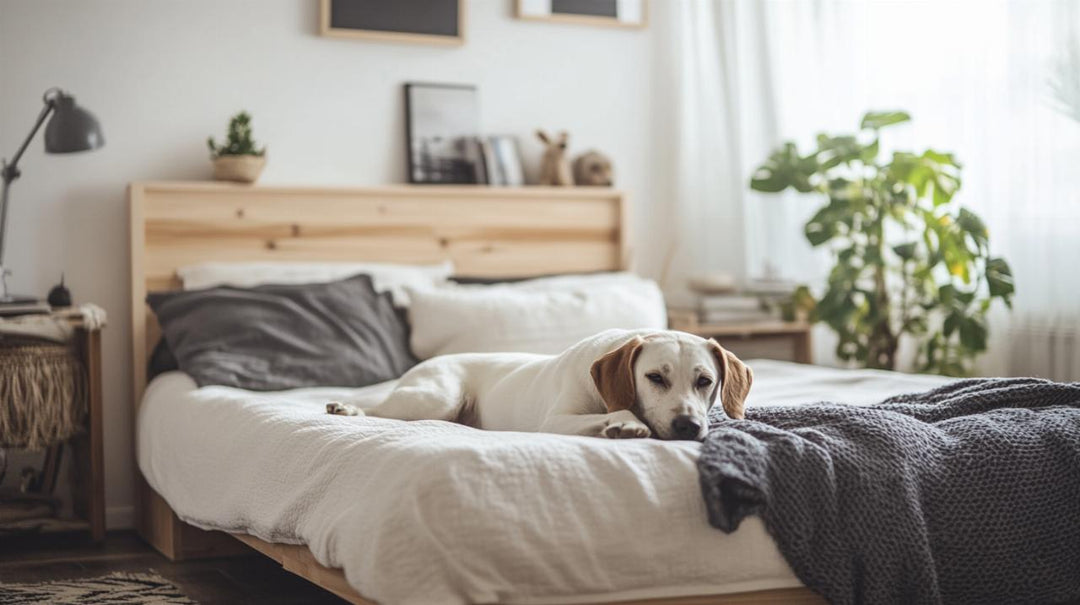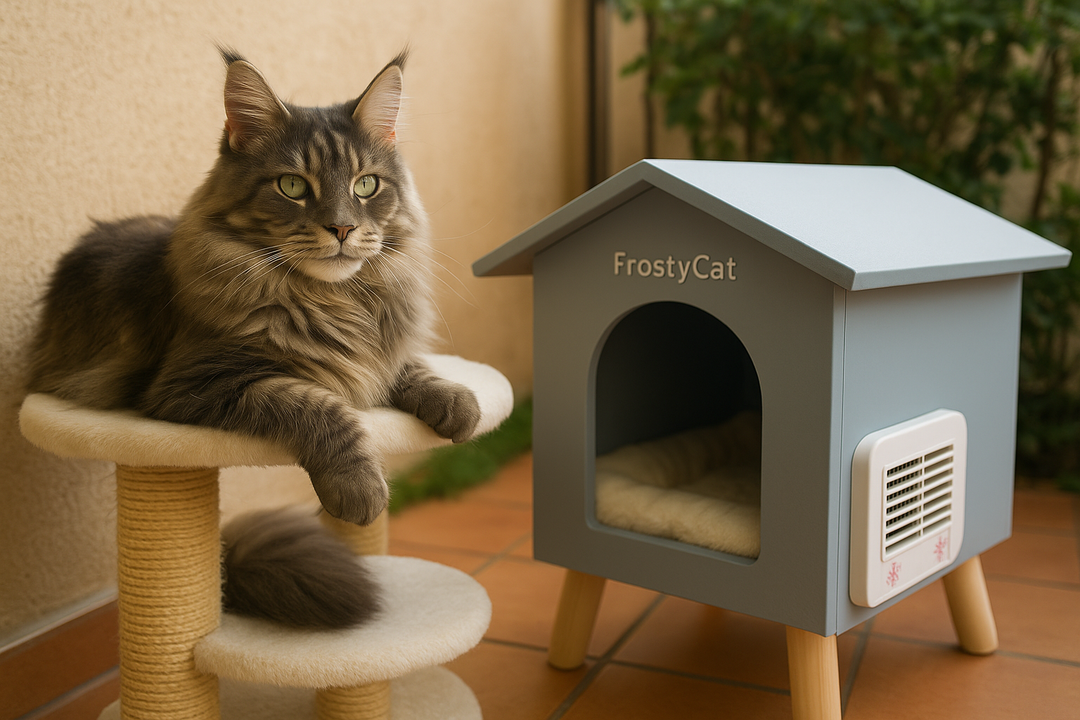Which cat tree should you choose? Mistakes to avoid...
Choosing a cat tree may seem like a simple task, but there are several common mistakes that can lead to a purchase that's unsuitable, or even unusable, for your feline. A cat tree is much more than just an accessory: it's an essential space for your companion's well-being, allowing them to climb, rest, play, and sharpen their claws. In this article, we'll guide you through common mistakes and make the perfect choice, whether you're looking for a designer, wall-mounted, XXL, or natural wood tree.
Why is choosing the right cat tree essential?
A suitable cat tree:
• Meets your cat's natural needs , such as climbing, observing or perching high up.
• Protects your furniture by providing an alternative to scratches.
• Promotes your cat's physical and mental health through stimulating activities.
• Blends harmoniously into your interior, without sacrificing aesthetics or space.
But if the cat tree is not chosen carefully, it risks remaining unused or, worse, posing safety risks to your pet.
The Most Common Mistakes (and How to Avoid Them)
1. Choosing a cat tree that is not suitable for your cat’s size
Not all cat trees are suitable for all cats. For example, a Maine Coon or a Ragdoll, known for their large size, will not find comfort on a tree that is too small or fragile.
• To avoid: Narrow platforms or niches that are too small.
• Solution: Choose XXL trees, designed for large cats, with wide platforms (at least 50 x 50 cm) and sturdy materials.
2. Underestimating stability
A wobbling cat tree is not only unpleasant for your cat, but can also be dangerous, especially if you have small children who might walk past or climb on it.
• Avoid: Trees that are too light for very active cats.
• Solution :
• Weight the tree to increase its stability.
• Choose a model that is fixed to the wall or floor to ceiling , which is not likely to fall. These models offer increased safety, provided you choose the fixings carefully according to the type of wall you have and the weight of your cat (see our guide to installing wall-mounted cat trees).
3. Neglecting safety
An ill-suited cat tree can pose risks to your pet, especially if it is too light or poorly designed for its behavior.
• To avoid: Choosing a cat tree that is not suitable for a very agitated or large cat.
• Solution :
• For active cats, choose a sturdy tree or attach it to the wall or ceiling to avoid any risk of tipping.
• If you have small children, make sure the tree is perfectly stable or weighted for added safety.
• Adapt the fixings according to the type of wall (plasterboard, concrete, brick) and the weight of your cat. Consult our dedicated guide for detailed advice.
4. Focusing solely on aesthetics
Some designer cat trees may be very stylish but neglect functionality. If the tree isn't comfortable, your cat may ignore it altogether.
• To avoid: Trees that are purely aesthetic, without scratching posts or suitable resting areas.
• Solution: Choose a model that balances design and utility, with sisal scratching posts, removable cushions and play areas.
5. Ignoring your cat's specific needs
Every cat is unique. Some love to climb high, while others prefer to stay close to the ground. Young, active cats need multiple platforms and play areas, while older cats prefer easily accessible structures.
• To avoid: Buying a tree that is too high or too complex for an older or less agile cat.
• Solution: Observe your cat's behavior and adapt your choice accordingly. For a calm cat, choose a low model with comfortable niches. For an active cat, opt for tall trees with varied platforms.
6. Neglecting the available space in your home
A cat tree that is too bulky can become a nuisance in your home, while one that is too small may not provide enough space for your cat.
• Avoid: Buying a tree that is too large for a small apartment or too small for a spacious house.
• Solution: For smaller spaces, choose wall-mounted or floor-to-ceiling trees that take advantage of verticality without cluttering the floor. For larger rooms, an XXL or multi-functional tree will be ideal.
7. Choosing poor quality materials
Materials play a crucial role in the durability and appeal of the cat tree. Scratching posts should be durable, platforms comfortable, and fabrics washable.
• To avoid: Cardboard models or models with fabrics that are difficult to clean.
• Solution: Choose materials such as natural wood, sisal for scratching posts and removable and washable cushions.
8. Ignoring the interview
A cat tree that is poorly maintained or difficult to clean can quickly become a problem, especially if your cat sheds a lot or if the scratching posts wear out too quickly.
• Avoid: Models with non-removable cushions or materials that retain hair.
• Solution: Choose trees that are easy to clean, with washable covers and replaceable scratching posts.
9. Not anticipating your cat's development
A cat tree that is suitable for a kitten may become unusable as it grows.
• Avoid: Buying a tree that is too low or fragile for a growing cat.
• Solution: Invest in an evolving or durable model, which can accompany your cat throughout its life.
10. Forgetting to integrate into your decor
A cat tree can be a real headache if you don't think about how it fits into your interior.
• To avoid: Imposing models or models with garish colors that clash with your decor.
• Solution: Choose a designer or natural wood tree that matches your style, whether modern, Scandinavian or classic.
Conclusion
Choosing a cat tree may seem simple, but avoiding these common mistakes ensures a wise investment for both your cat and your home. Consider your companion's size, needs, and preferences while selecting an aesthetically pleasing and functional model that fits your space. With a well-chosen cat tree, your feline will enjoy a safe and comfortable space while enriching your home.
